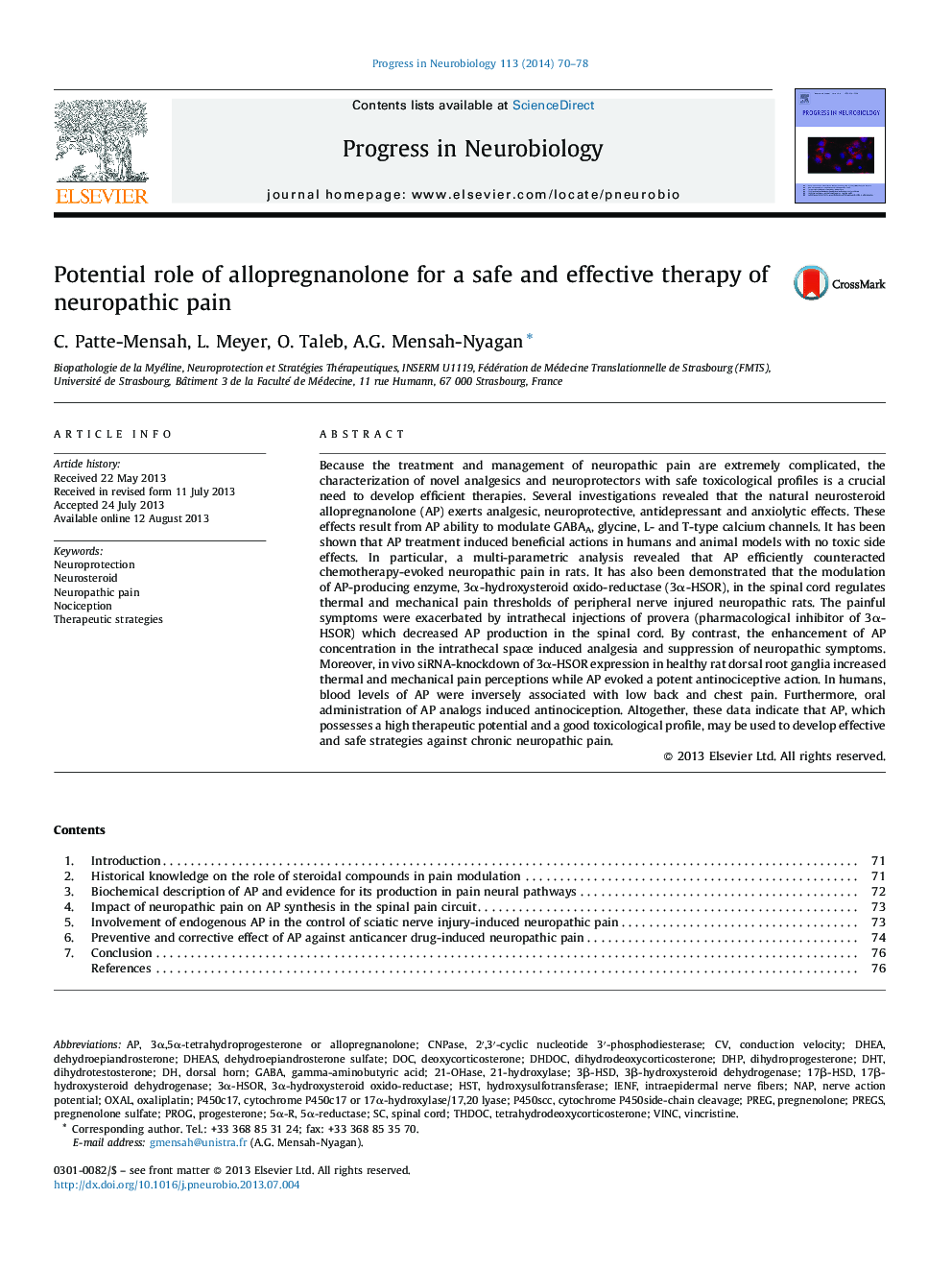| Article ID | Journal | Published Year | Pages | File Type |
|---|---|---|---|---|
| 4353356 | Progress in Neurobiology | 2014 | 9 Pages |
•AP efficiently counteracts chemotherapy- or nerve injury-induced neuropathic pain.•The modulation of AP-producing enzyme in the spinal cord regulates pain thresholds.•siRNA-knockdown of AP-producing enzyme in pain circuit increases nociception.•Oral administration of AP analogs induces antinociception.•AP offers a good profile for safe and effective strategies against neuropathic pain.
Because the treatment and management of neuropathic pain are extremely complicated, the characterization of novel analgesics and neuroprotectors with safe toxicological profiles is a crucial need to develop efficient therapies. Several investigations revealed that the natural neurosteroid allopregnanolone (AP) exerts analgesic, neuroprotective, antidepressant and anxiolytic effects. These effects result from AP ability to modulate GABAA, glycine, L- and T-type calcium channels. It has been shown that AP treatment induced beneficial actions in humans and animal models with no toxic side effects. In particular, a multi-parametric analysis revealed that AP efficiently counteracted chemotherapy-evoked neuropathic pain in rats. It has also been demonstrated that the modulation of AP-producing enzyme, 3α-hydroxysteroid oxido-reductase (3α-HSOR), in the spinal cord regulates thermal and mechanical pain thresholds of peripheral nerve injured neuropathic rats. The painful symptoms were exacerbated by intrathecal injections of provera (pharmacological inhibitor of 3α-HSOR) which decreased AP production in the spinal cord. By contrast, the enhancement of AP concentration in the intrathecal space induced analgesia and suppression of neuropathic symptoms. Moreover, in vivo siRNA-knockdown of 3α-HSOR expression in healthy rat dorsal root ganglia increased thermal and mechanical pain perceptions while AP evoked a potent antinociceptive action. In humans, blood levels of AP were inversely associated with low back and chest pain. Furthermore, oral administration of AP analogs induced antinociception. Altogether, these data indicate that AP, which possesses a high therapeutic potential and a good toxicological profile, may be used to develop effective and safe strategies against chronic neuropathic pain.
